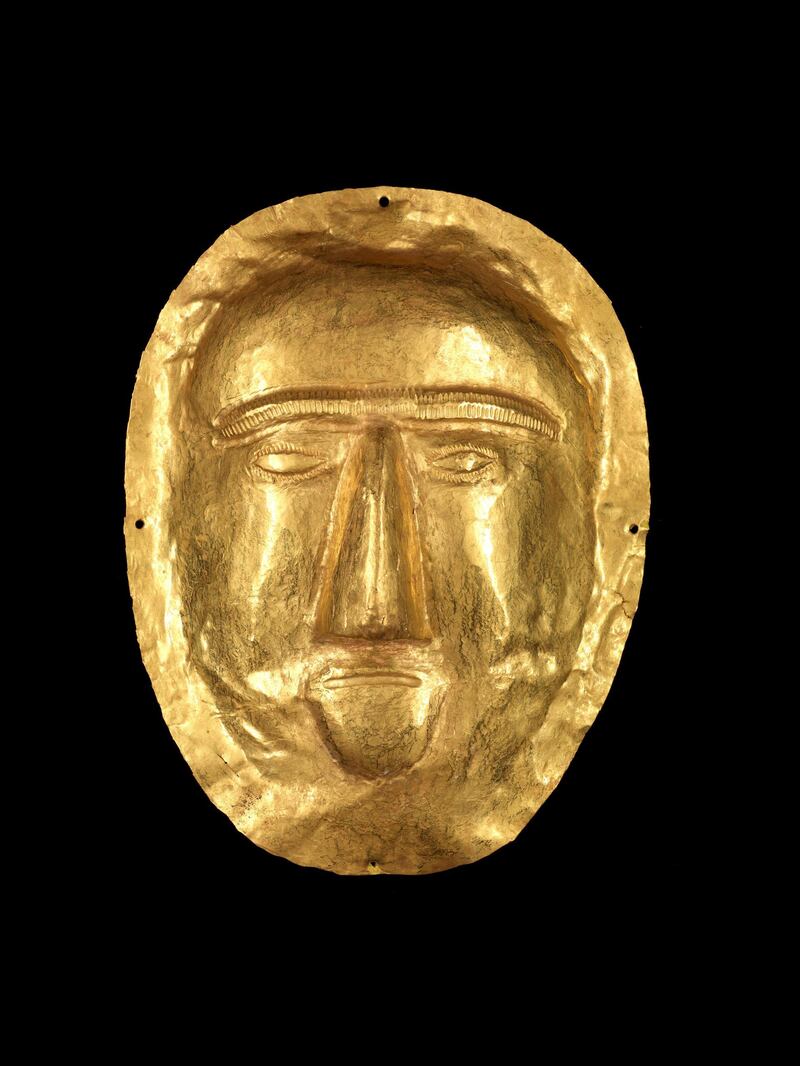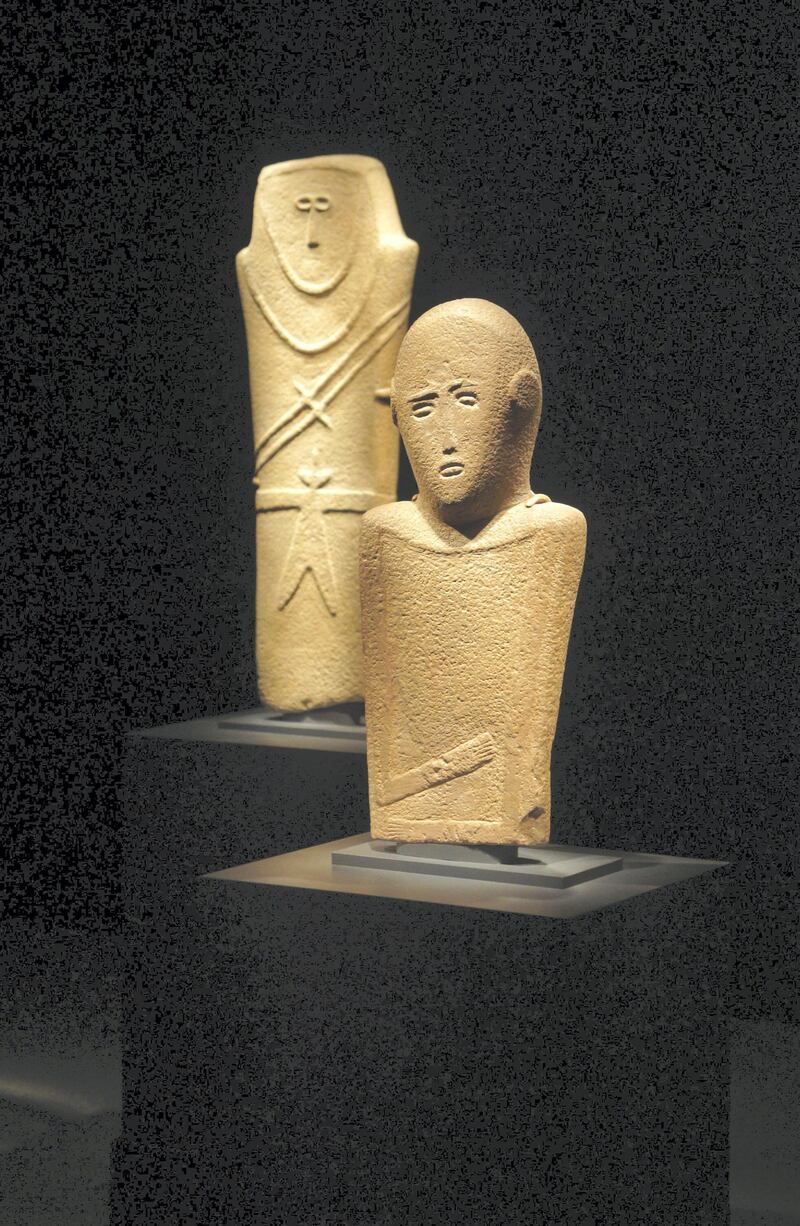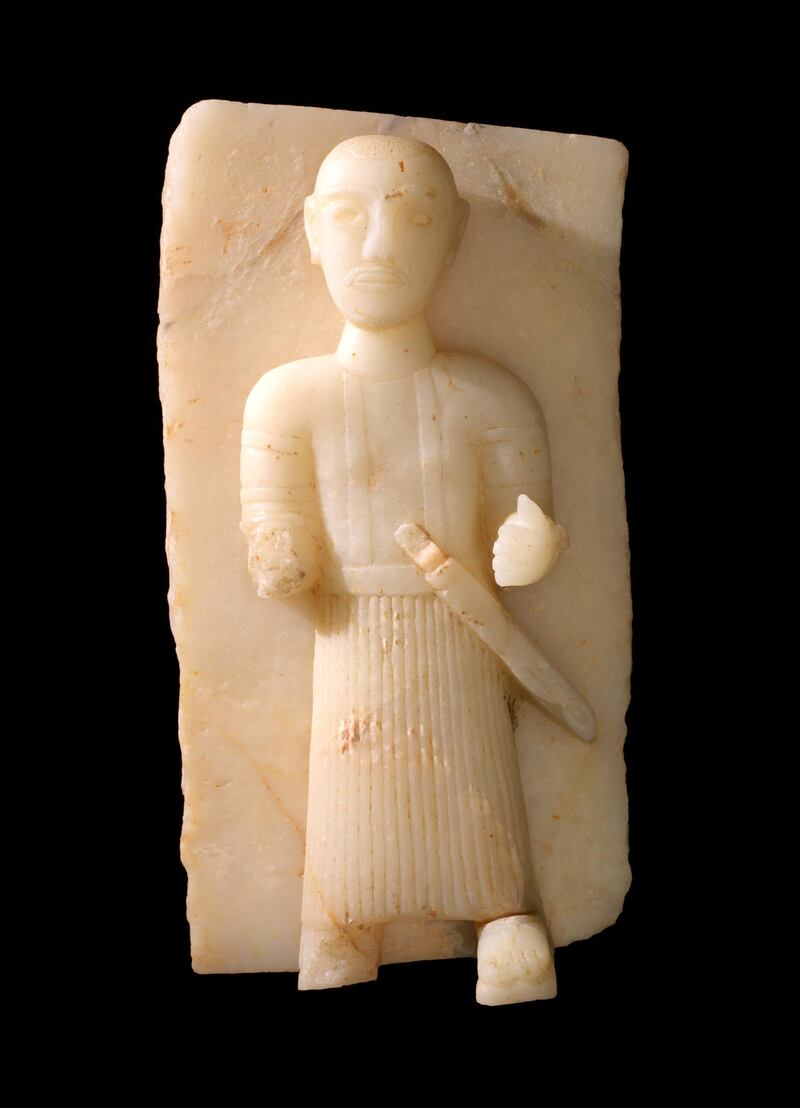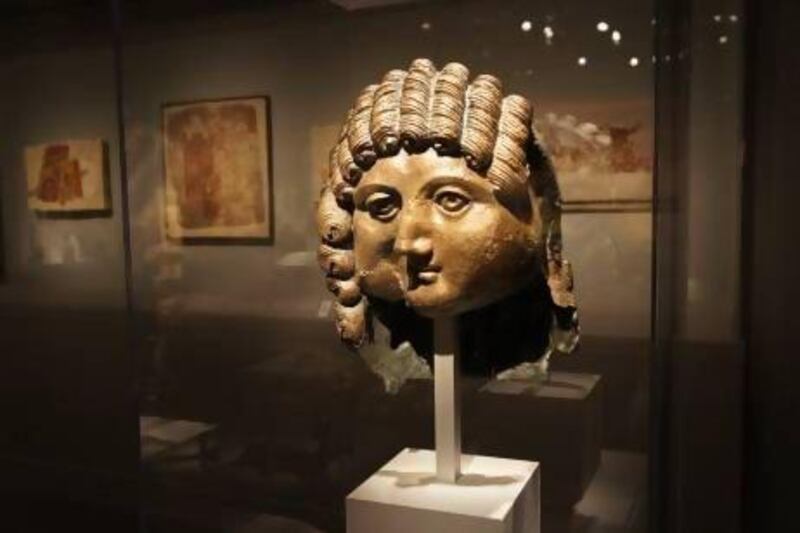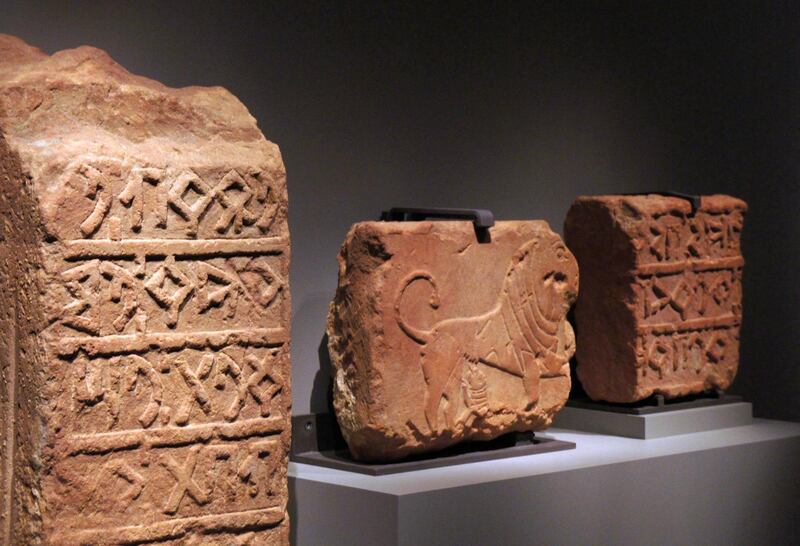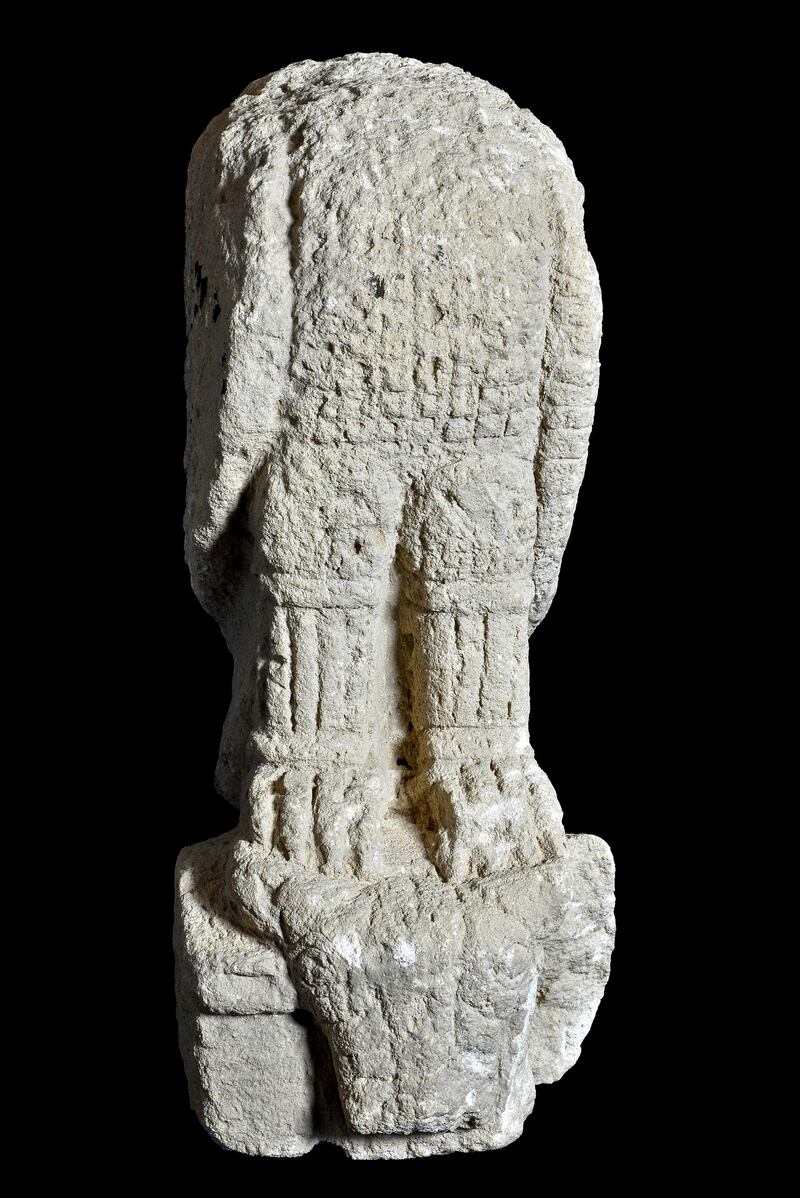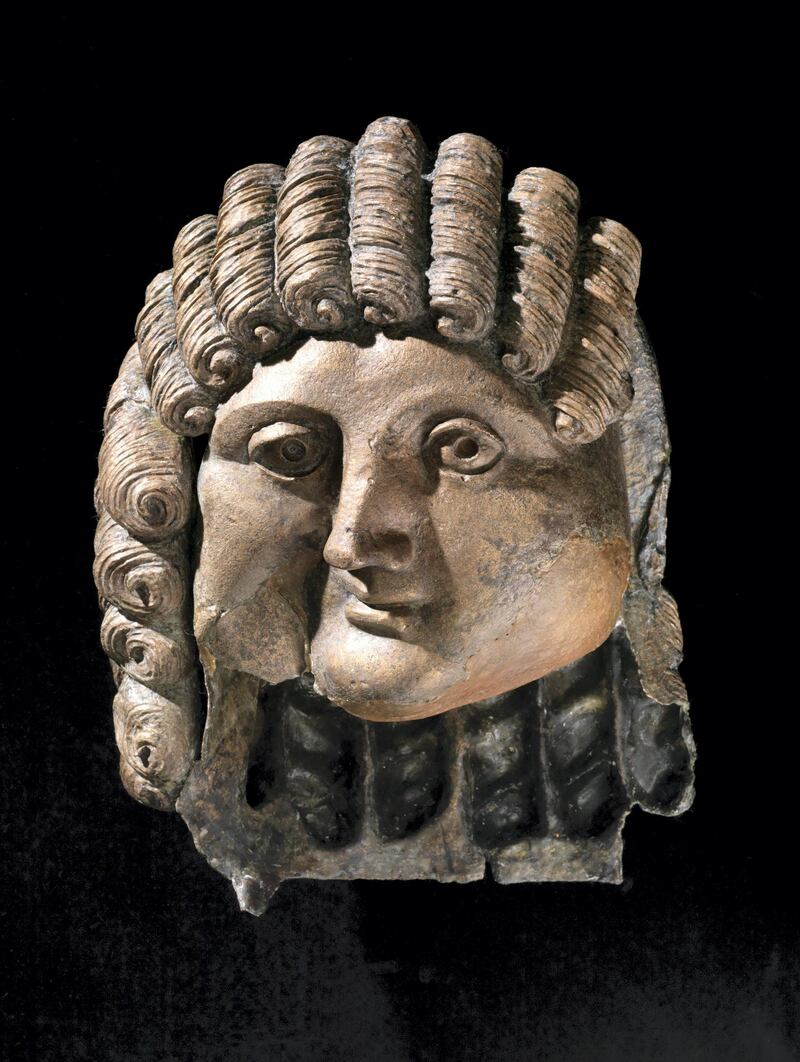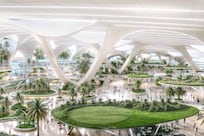The smile on the man's face is subtle, playful even, as he gazes back at us through the ages. His smile has a strange immediacy that is almost impossible to believe, because this bronze head is thought to be several thousand years old. Unearthed at Qaryat Al Faw in Saudi Arabia, the sculpture is one of many pieces that shed new light on the people that have lived here since the dawn of time. They were travellers, merchants and pilgrims, who crisscrossed Arabia forging cultural links, establishing trade routes and trekking on the arduous pilgrim path to Islam's holiest sites.
Louvre Abu Dhabi's blockbuster new exhibition, Roads of Arabia: Archaeological Treasures of Saudi Arabia, explores this vibrant world and seeks to broaden our understanding of a region long viewed through the reductive prism of oil.
Hundreds of priceless artefacts from Saudi Arabia and the UAE are on display, including gold funeral masks, bronze statues, ancient steles (vertical stone slabs), and a door to the Kaaba of Makkah’s Grand Mosque. Many of the archaeological pieces have been unearthed only in the past few decades by Saudi and international teams, but they are slowly drawing the curtain back on a dazzling, unexplored world.
“Roads of Arabia emphasises the role of the Arabian Peninsula as a place of exchange since earliest antiquity,” says Souraya Noujaim, scientific, curatorial and collection management director at Louvre Abu Dhabi.
The environment in Arabia was hostile and tough, but those who lived here seemed to thrive in spite of it all. From the lush oases grew settlements, bringing money, prosperity and even international fashions. Crossroads is an overused term, but the roads of Arabia crowded with people from Baghdad, Damascus, Cairo and beyond.
“The exhibition reveals the diversity of the cultures and civilisations that, in spite of difficult natural conditions, succeeded in exploiting the geographical position of the region,” says Noujaim, also one of the three curators.
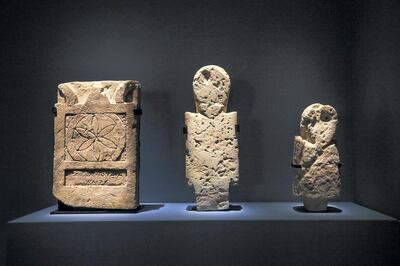
Of the many striking pieces on display are sandstone funeral steles. Despite the fact they are from the fourth millennium BC, the minimalist style suggests the work of a modern-day stone mason. One in particular stands out, with a man’s head titled to the side slightly that conveys a deeply emotional expression. It is hard to believe, but this type of sculpture was developed by communities of herders who moved from place to place along the western coasts of Arabia.
Colossal human statues uncovered at Dedan in Arabia's north-west also shed light on the royal Lihyanite kingdom. It is believed that 32 statues once existed at the site and seven have been excavated. Three of these brood mysteriously over the exhibition spaces.
Qaryat Al Faw, the town where the bronze head of man was unearthed, emerges as a particularly interesting settlement. It was the capital of the Kindah kingdom which existed from the fourth century BC until the fourth century AD. It was a prosperous town, probably because of its location on a road that stretched from southern Arabia to the shores of the Gulf, and had many temples and a market.
Roads of Arabia takes visitors on a journey around the peninsula in five chapters. First, it examines prehistoric settlements in Arabia. The first humans left Africa about a million years ago, and over the ages, the climate changed. Once Arabia was green and wet, populated by animals such as elephants and horses. Incredible sculptures dating to the ninth millennium BC in the first gallery show the diversity of pre-historic Arabia. One even shows a horse.
The exhibition then moves on to the coasts to chart growing exploration of the seas, then on to the caravan trading routes that drew merchants from across the region. Following the dawn of Islam in the seventh century, the roads of Arabia now thronged with pilgrims. The routes and stopping-off points for those travelling to the holy cities of Makkah and Madinah are the subject of the fourth chapter. Roads of Arabia closes by setting the scene for the country we know today.
"Inland, the pilgrimage roads enabled numerous cultures to meet and come together, notably in the two holy cities, and these exchanges were a catalyst for the growth of the region," Noujaim says.
The main changes to this leg of the show are the inclusion of rare artefacts from the UAE. These include a pearl found in Umm Al Quwain from 5,500 BC and an ancient stone decorated with a wild camel on loan from the Al Ain Museum.
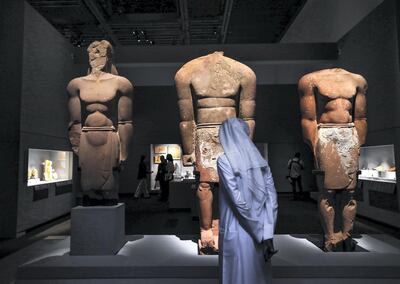
“This edition retains the overall narrative of the show originally presented… in 2010. At the same time, it seeks to tie the story more closely to the local context by incorporating a range of Emirati artworks,” Noujaim says.
The exhibition was developed by the Saudi Commission for Tourism and National Heritage (SCTH) and the Louvre in Paris. The exhibition has travelled across the world since 2010, stopping off at 14 of the world's top museums and drawing more than five million visitors along the way. One of these stops was at the Smithsonian's renowned Arthur M Sackler Gallery in Washington.
According to the chief curator at the Sackler, Roads of Arabia was one of the most popular archaeological exhibitions ever to have been staged there. "Our audiences were fascinated with the exhibition, which drew large crowds," Massumeh Farhad explains. "Few visitors were aware of the ancient arts and cultures of the Arabian Peninsula." Farhad says that masterpieces such as the ancient steles proved that a thriving cultural, artistic and commercial network existed in the region long before the arrival of Islam. "This exchange of ideas and concepts continued during the Islamic period and the magnificent Kaaba doors are an example."
___________________
Read more:
Why I will always remember the Louvre Abu Dhabi I saw first
Louvre Abu Dhabi: landmark museum is ready to open after ten-year journey
Louvre Abu Dhabi: the long-awaited first look inside
UAE and Saudi dignitaries tour Roads of Arabia - in pictures
___________________
The door to the Kaaba, for example, dates from 1355. Non-Muslims cannot travel to Makkah or Madinah, so this represents a unique opportunity for some to get very close to Islam's holy sites. Noteworthy, too, is the fact this is the exhibition's first stop in the Arabian Peninsula outside of the Saudi Arabia.
The show covers a lot of territory and eras over just a few galleries, and closes with a room dedicated to the modern Saudi state. This slightly jars with the ancient artefacts that have gone before and perhaps would be best-suited to an exhibition in its own right.
Nonetheless, the spectacular archaeological discoveries unearthed in Saudi Arabia and the UAE over the past few decades are continually reshaping our understanding of the region.
Archaeological work has shown how ancient networks of communities across Arabia were smart, advanced and plugged into the wider world. They should not be underestimated.
Arabia, therefore, drinks from a deep cultural well and this exhibition offers a glimpse at the richness of life here thousands of years ago. It hints at the treasures remaining to be found and underlines how the history of Saudi Arabia did not begin with oil.
Roads of Arabia: Archaeological Treasures of Saudi Arabia at Louvre Abu Dhabi is on until February 16. For more information, visit www.louvreabudhabi.ae
